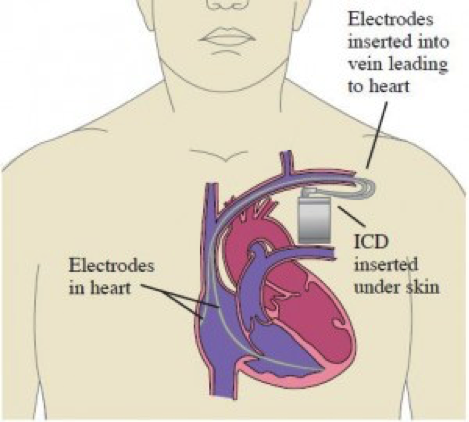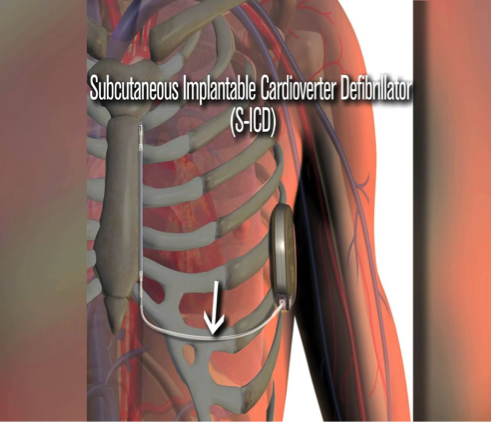Defibrillators
Defibrillators are implanted devices that record the electrical signals from within the heart and communicate with the device when the heart has gone into a rapid, dangerous arrhythmias. When the device detects a dangerous arrhythmia, it delivers electrical energy through the heart to reset the heart’s electrical rhythm and resume its normal electrical activity.
The entire process from detection to termination of this potentially fatal arrhythmia usually lasts 6-15 seconds. This device can be highly effective and often lifesaving in patients who are at risk for dying from dangerous electrical heart rhythms.
How Defibrillators are Placed
Defibrillators are implanted in a similar fashion to permanent pacemakers. Using a large vein of the arm that passes underneath the collar bone, wires or leads are passed into the right chambers of the heart. This lead is connected to the device which is then placed under the skin below the collar bone.
Newer technology defibrillators are inserted under the skin without wires into the veins or the heart – these are known as Subcutaneous defibrillators also called SICD.
Defibrillators are battery operated devices that must be replaced when the batteries begin to run down. Most defibrillators last upwards of 10 years. Replacing the generator device is a relatively straightforward procedure with low risk.



